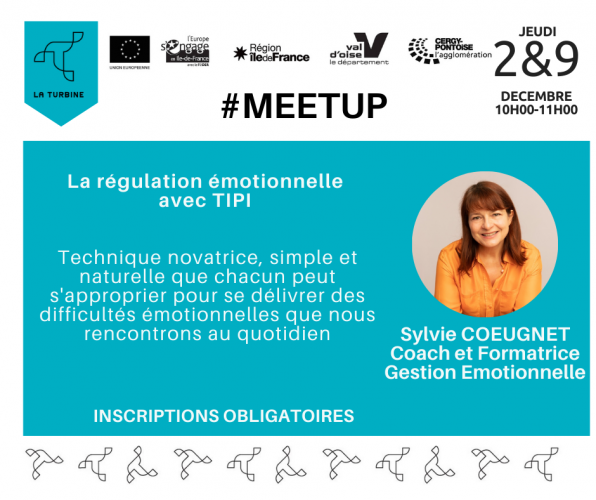Tipi Regulation Emotionnelle
Experience Emotional Regulation with TIPI Method
Emotions play a crucial role in our daily lives. They can either empower us or hinder our progress. However, not everyone knows how to regulate their emotions effectively. Fortunately, there is a powerful technique called the TIPI method that can help individuals tune into their emotions and regulate them in a healthy way. In this post, we will explore the benefits of the TIPI method and how it can transform your emotional well-being.
Understanding the TIPI Method
The TIPI method is a revolutionary technique developed by Luc Nicon that enables individuals to regulate their emotions effectively. TIPI stands for Technique for the Identification of Unconscious Fears, which highlights its main purpose: uncovering and addressing deep-rooted emotions that influence our behavior and well-being.
The method involves accessing the body's physical sensations associated with specific emotions and allowing them to release naturally. By going through this process, individuals can experience profound emotional transformation and find relief from various emotional disturbances.
How Does the TIPI Method Work?
The TIPI method follows a simple yet powerful process to regulate emotions. Here are the steps involved:
1. Connect with the Emotion
The first step in using the TIPI method is to establish a connection with the emotion you wish to regulate. Take a moment to identify and acknowledge the specific emotion you are experiencing. This can be anything from fear and anger to sadness or anxiety.
2. Focus on Physical Sensations
Once you have identified the emotion, shift your attention to the physical sensations associated with it. Notice where in your body you feel the emotion the most. Is it a tightness in your chest, a knot in your stomach, or a tension in your shoulders? Pay close attention to these sensations.

3. Allow the Sensations to Intensify
Now, instead of trying to suppress or avoid the sensations, allow them to intensify. This may feel counterintuitive at first, but it is an essential step in the TIPI method. By embracing the sensations, you create an opportunity for them to release naturally.
4. Observe the Shift
As you allow the sensations to intensify, observe any shifts that occur. You may notice changes in the intensity, location, or quality of the sensations. These shifts indicate that the emotion is being regulated and released.
5. Integration
After the sensations have subsided, take a moment to integrate the experience. Reflect on the emotional regulation that has taken place and notice any changes in how you feel. You may feel lighter, more centered, or even experience a sense of relief.
The Benefits of the TIPI Method
The TIPI method offers numerous benefits for individuals seeking to regulate their emotions. Here are some of the key advantages:
1. Rapid and Lasting Results
One of the remarkable aspects of the TIPI method is its ability to deliver rapid and lasting results. By directly addressing the physical sensations associated with emotions, the method enables individuals to resolve deeply rooted emotional patterns efficiently. This can lead to long-lasting emotional regulation without the need for recurring therapy sessions.
2. Holistic Approach
The TIPI method takes a holistic approach to emotional regulation. It recognizes that emotions are not just mental experiences but also involve physical sensations. By targeting these physical sensations, the method empowers individuals to regulate their emotions at a deeper level, fostering overall emotional well-being.
3. Empowerment and Self-Sufficiency
Another significant benefit of the TIPI method is that it teaches individuals to become more self-sufficient in regulating their own emotions. Instead of relying on external factors or individuals to find emotional balance, the method equips individuals with the necessary tools and techniques to regulate their emotions independently.
FAQs about the TIPI Method
Q: Can anyone use the TIPI method?
A: Yes, the TIPI method can be used by anyone who wants to regulate their emotions effectively. It is suitable for individuals of all ages, backgrounds, and walks of life.
Q: How long does it take to see results with the TIPI method?
A: The TIPI method is known for delivering rapid results. In many cases, individuals experience a shift in their emotions within a single session. However, the exact timeline may vary depending on the individual and the specific emotional patterns being addressed.
Q: Is the TIPI method a substitute for therapy?
A: While the TIPI method can be highly effective in regulating emotions, it is not a substitute for therapy. It can complement therapeutic interventions and provide individuals with additional tools to support their emotional well-being.
Q: Can the TIPI method be practiced alone or does it require a facilitator?
A: The TIPI method can be practiced alone once individuals have familiarized themselves with the technique. However, for those new to the method or dealing with complex emotional patterns, working with a trained facilitator can provide valuable support and guidance.
Conclusion
The TIPI method offers a unique and effective approach to emotional regulation. By focusing on the physical sensations associated with emotions, individuals can tap into their internal resources and find profound relief and transformation. Whether you are dealing with fear, anger, sadness, or any other challenging emotion, the TIPI method can guide you towards a healthier and more balanced emotional state. Start exploring this powerful technique today and experience the positive impact it can have on your emotional well-being.
Régulation émotionnelle TIPI | Frédéric Chastelas
 Image Source : fredericchastelas.com
Image Source : fredericchastelas.com Tipi - Régulation émotionnelle - Développez Vos Talents
Régulation émotionnelle : Interview D'une Praticienne En TIPI
 Image Source : top-topic.com
Image Source : top-topic.com Méthode Tipi : Libérez-vous De Vos Peurs ! | PenserChanger
 Image Source : www.penserchanger.com
Image Source : www.penserchanger.com Tipi Régulation Émotionnelle Professionnelle
 Image Source : fr.tipi.pro
Image Source : fr.tipi.pro Séance De Régulation Émotionnelle Méthode TIPI - Vivons Soi
 Image Source : www.vivonssoi.com
Image Source : www.vivonssoi.com Régulation émotionnelle Avec TIPI | La Turbine Cergy Pontoise
 Image Source : laturbine-cergypontoise.fr
Image Source : laturbine-cergypontoise.fr Séances Gratuites De Régulation Émotionnelle TIPI - Vivons Soi
 Image Source : www.vivonssoi.com
Image Source : www.vivonssoi.com Séances gratuites de régulation émotionnelle tipi. Régulation émotionnelle : interview d'une praticienne en tipi. Tipi régulation émotionnelle professionnelle. Séance de régulation émotionnelle méthode tipi. Régulation émotionnelle avec tipi